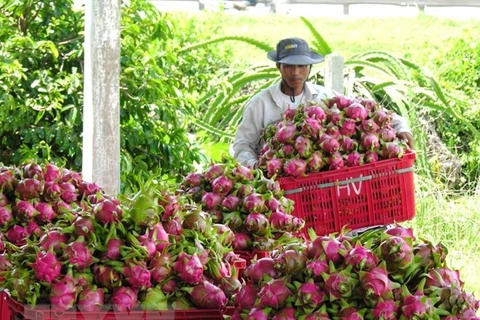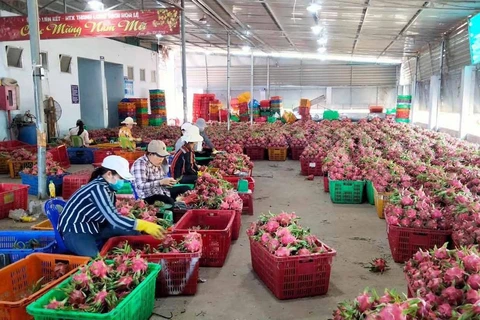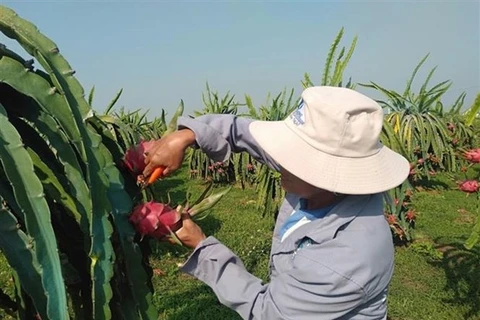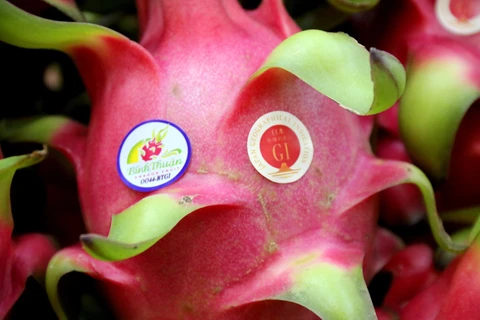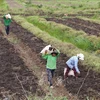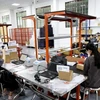 China sticking to "Zero COVID" policies has led to a trade bottleneck at border gates. More than 300,000 tonnes of ripening dragon fruits are at risk.(Photo tienphong.vn)
China sticking to "Zero COVID" policies has led to a trade bottleneck at border gates. More than 300,000 tonnes of ripening dragon fruits are at risk.(Photo tienphong.vn) This statement was made in a forum “Linking production and consumption of dragon fruits” jointly held by the Ministry of Agriculture and Rural Development (MARD) and other agencies on January 6.
Thuong said bilateral trade between Vietnam and India had risen steadily in recent years, from 5.1 billion USD in 2016 to 11.2 billion USD in 2021, and is expected to top 13 billion USD this year.
Vietnam’s dragon fruit export to India went up quickly during 2019-2020, reaching over 11,000 tonnes and fetching 9.86 million USD.
However, the fruit’s export in 2020-2021 experienced a drop of 25 percent due to the pandemic. On top of that, India successfully sold its first batch of dragon fruit to UAE in June 2021, posing a competitive challenge.
Given the situation at hand, the counsellor suggested Vietnamese authorities hold regular talks with foreign counterparts, as well as forming working groups and subcommittees, in order to expand its market reach overseas.
Domestic associations and trade promotion agencies are also recommended to cooperate with diplomatic representatives abroad on trade promotion programmes to help firms improve their competitiveness in international markets.
“The enterprise community is strongly advised to diversify products, participate in trade forums, actively reach out to foreign partners, stay cautious during negotiations and pay attention to packaging,” Thuong added.
At the forum, Vietnamese trade counsellor in Japan Ta Duc Minh said Japan remained one of Vietnam’s leading trade partners and Vietnamese agricultural produce are always in high demand in the country.
Japanese firms were thus willing to do business with Vietnamese partners to import more fresh and processed fruits.
Japan allowed the import of Vietnamese white-fleshed dragon fruit in 2008 and red-fleshed fruit in 2017.
To boost agricultural exports to Japan, the counsellor recommended Vietnam shift the focus to highly processed products and pay closer attention to its products’ shelf life to adapt to complex domestic distribution systems in Japan.
“In the future, we would like to work with agencies of MARD to promote Vietnamese fruits on e-commerce trading floors in Japan,” Minh added.
Currently, Vietnam produces around 1.4 million tonnes of dragon fruits a year and more than 60 percent of this comes in Q3 and Q4. In 2021, Vietnam’s dragon fruit export raked in over 998 million USD.
Nguyen Quoc Thinh, Chairman of the Dragon Fruit Association of Long An province, disclosed that dragon fruits in the province would be harvested up until Lunar New Year with an expected price of 15,000 VND (0.66 USD) per kilo.
These fruits were set to be sold to China, but the pandemic led to the closure of most border gates and brought a halt to the trade flow.
The association thus urged the authorities to step up promotion to help Vietnamese dragon fruit find customers elsewhere, especially in India, and develop domestic market through supermarket chains, to less commercially depend on China.
According to Tran Thanh Nam, deputy minister of MARD, dragon fruit is a Vietnamese key export produce with a high competitiveness in international markets. The fruit has successfully made inroads into fruit-geared countries including Thailand, Indonesia and India.
Even demanding markets like Australia, the European Union and Chile have begun to give carte blanche to the Vietnamese fruit.
However, China continues to position itself as the main importer of Vietnamese dragon fruit.
Meanwhile, China has also been expanding its own dragon fruit cultivation for years, eating into the Vietnamese market share.
To sustain the consumption of the Vietnamese fruit, it is necessary to hold more trade forums to promote the fruit worldwide and develop the domestic market to be less dependent on the trade with China.
In the near future, firms should take advantage of free trade agreements to bring dragon fruit exports to the next level./.
VNA
